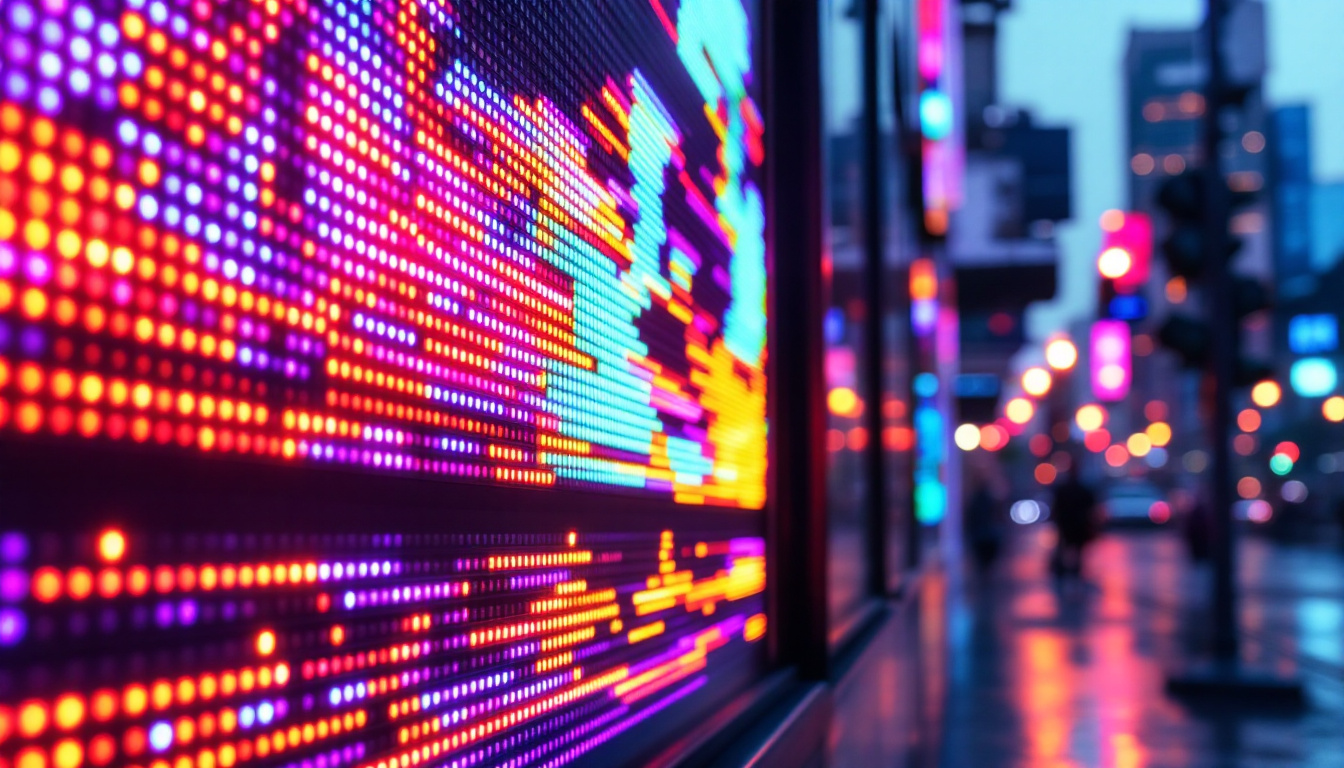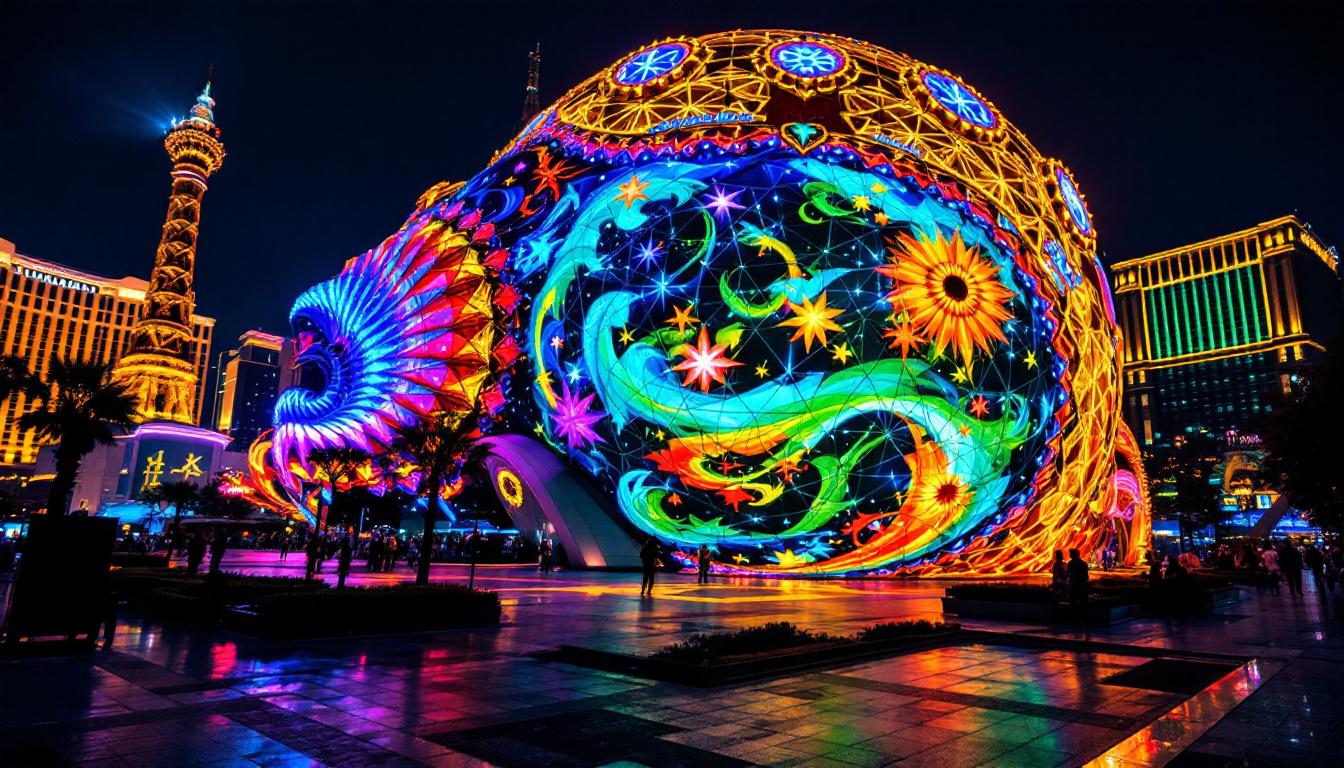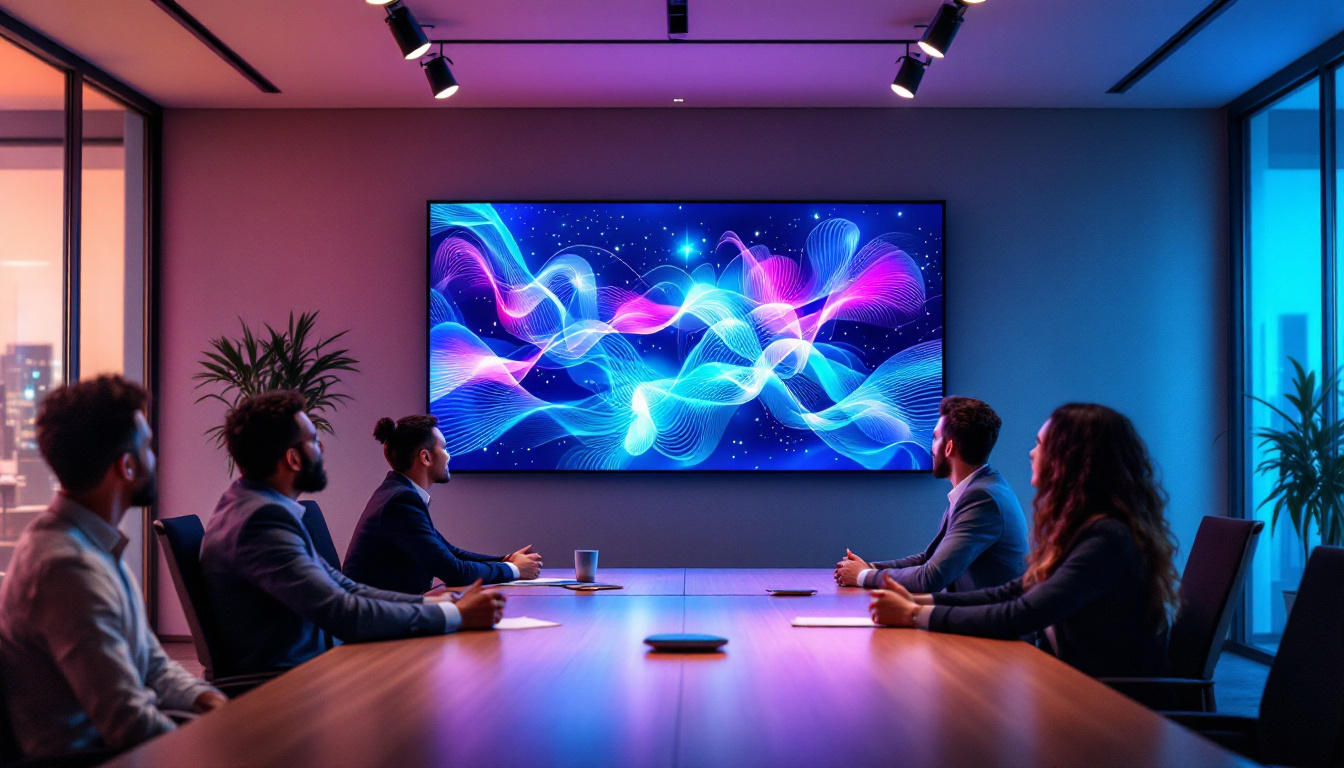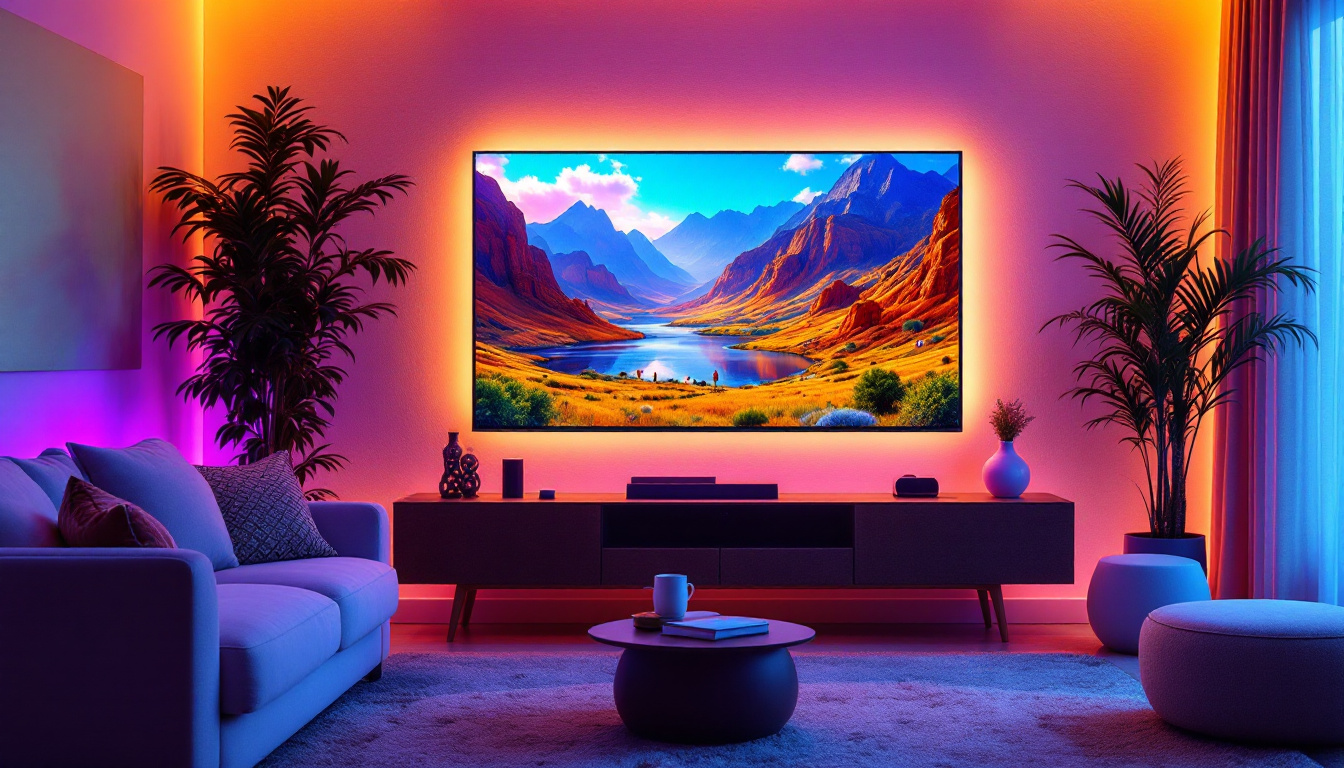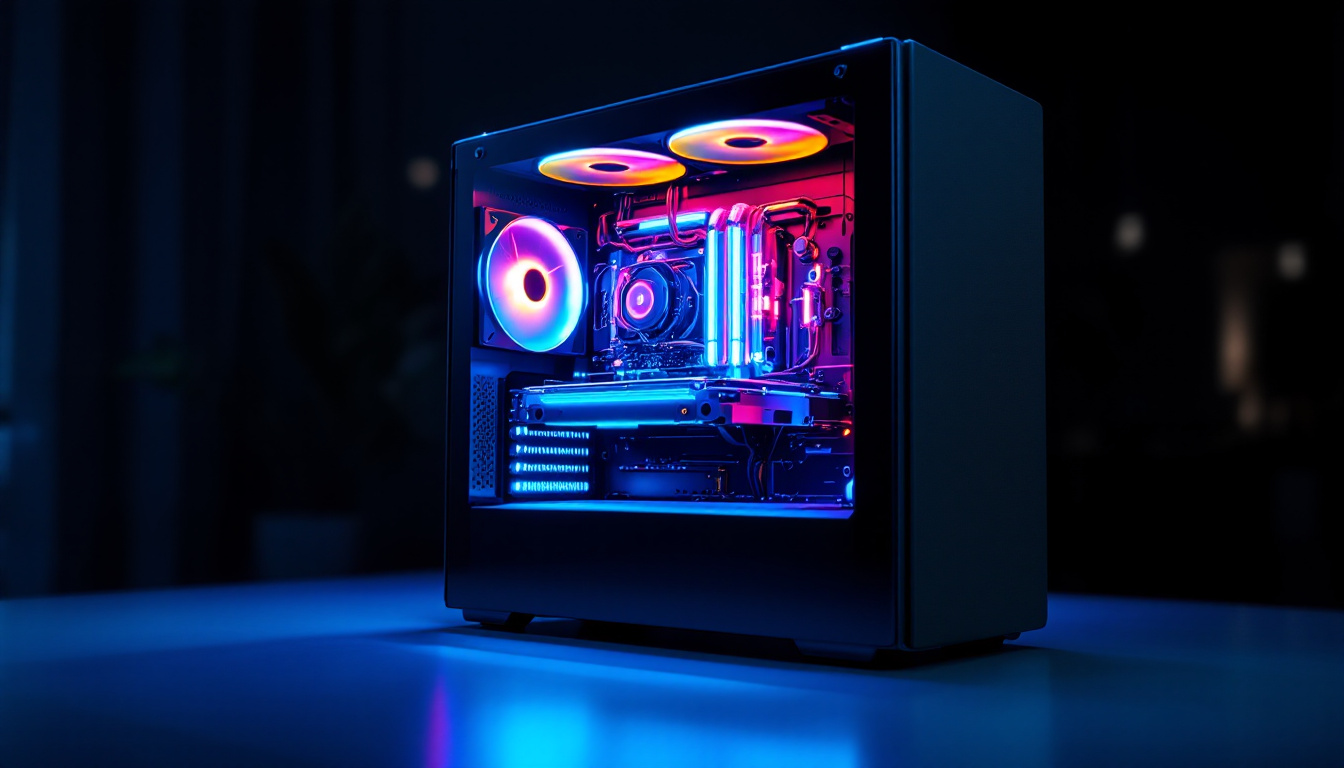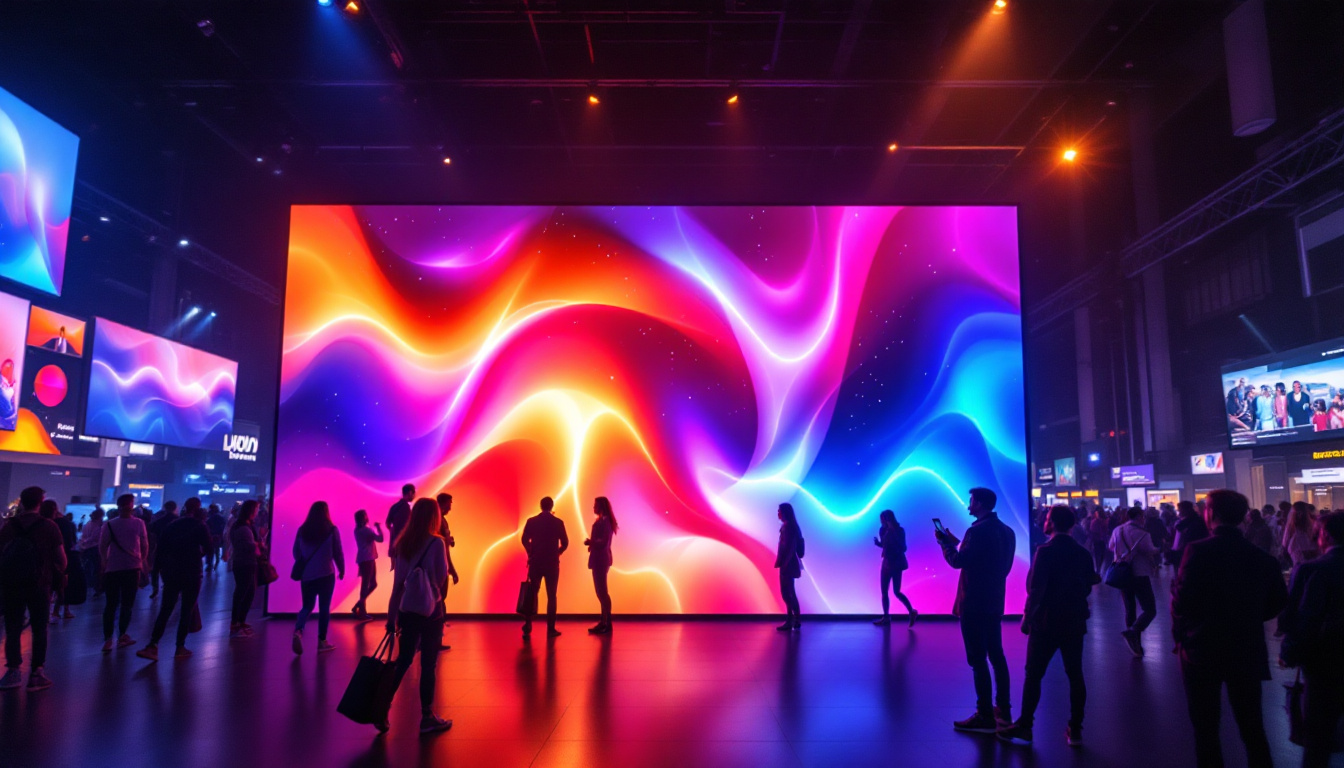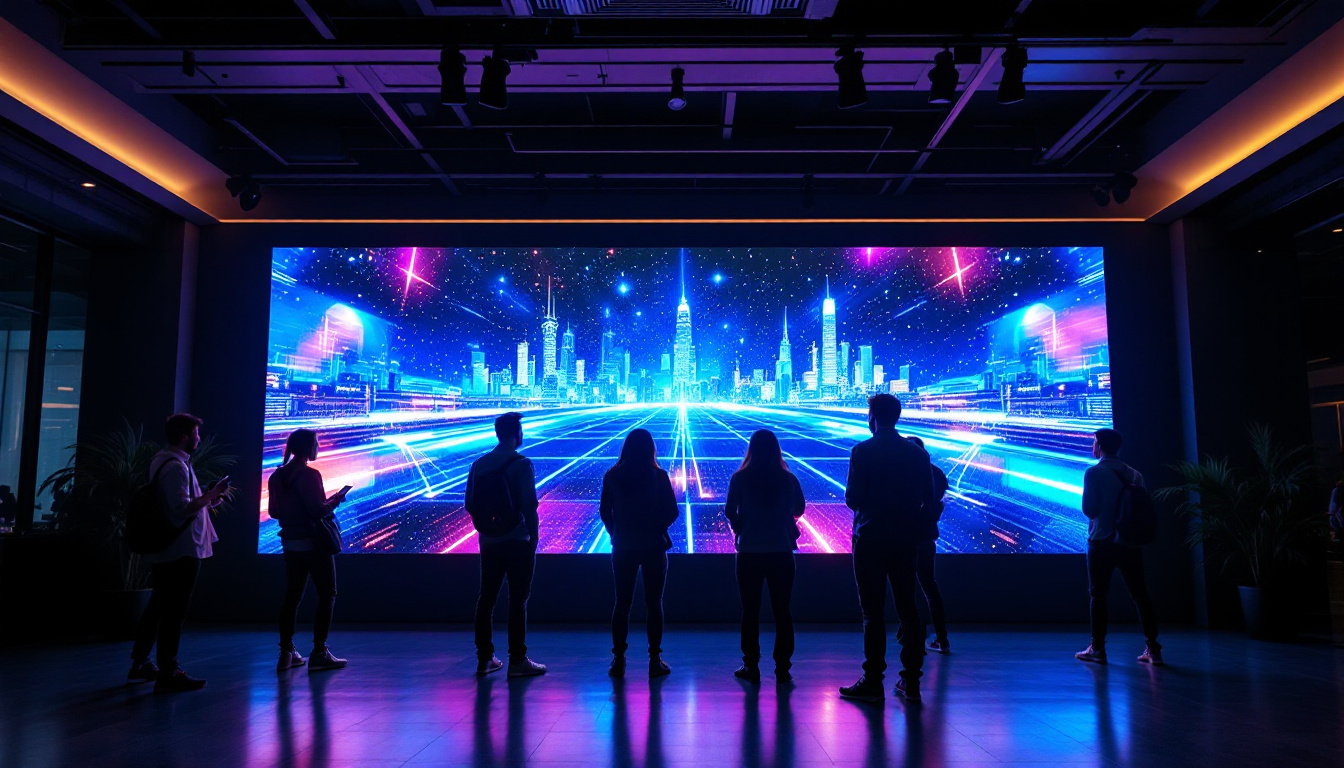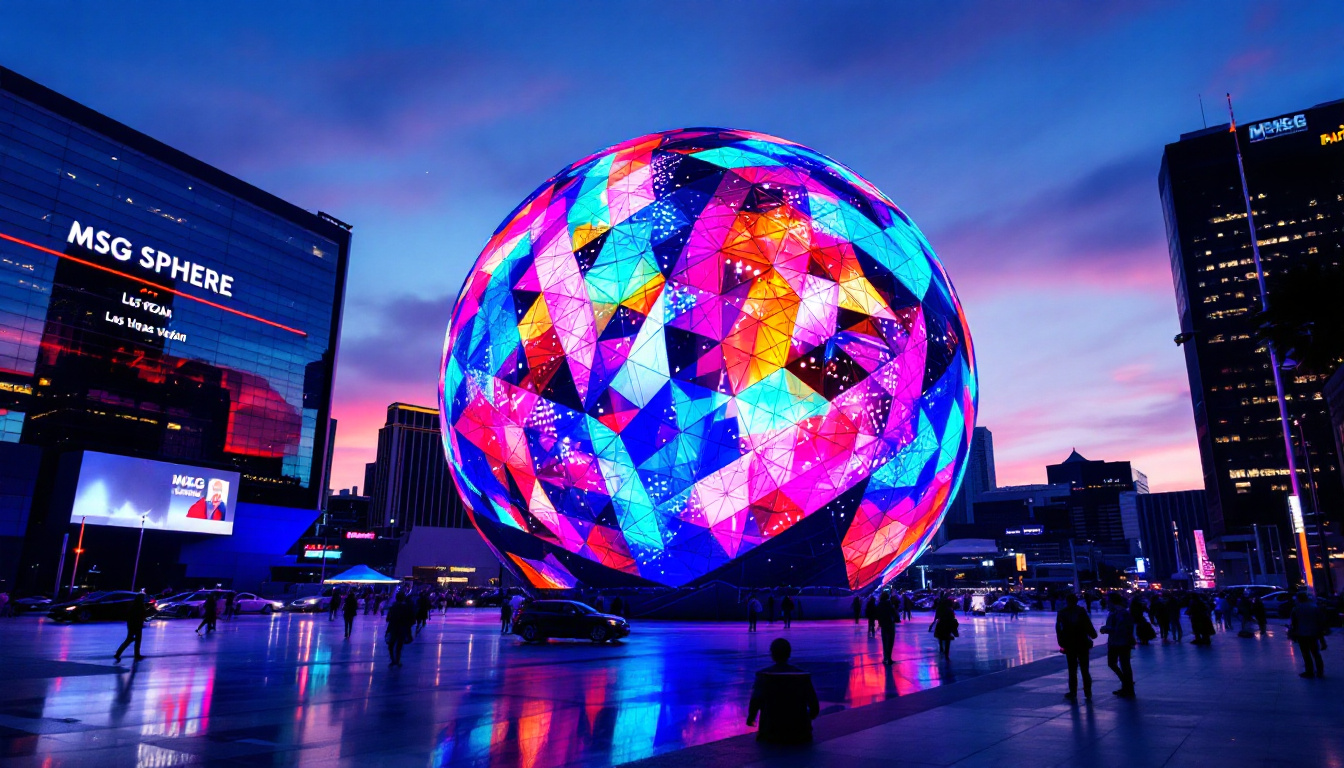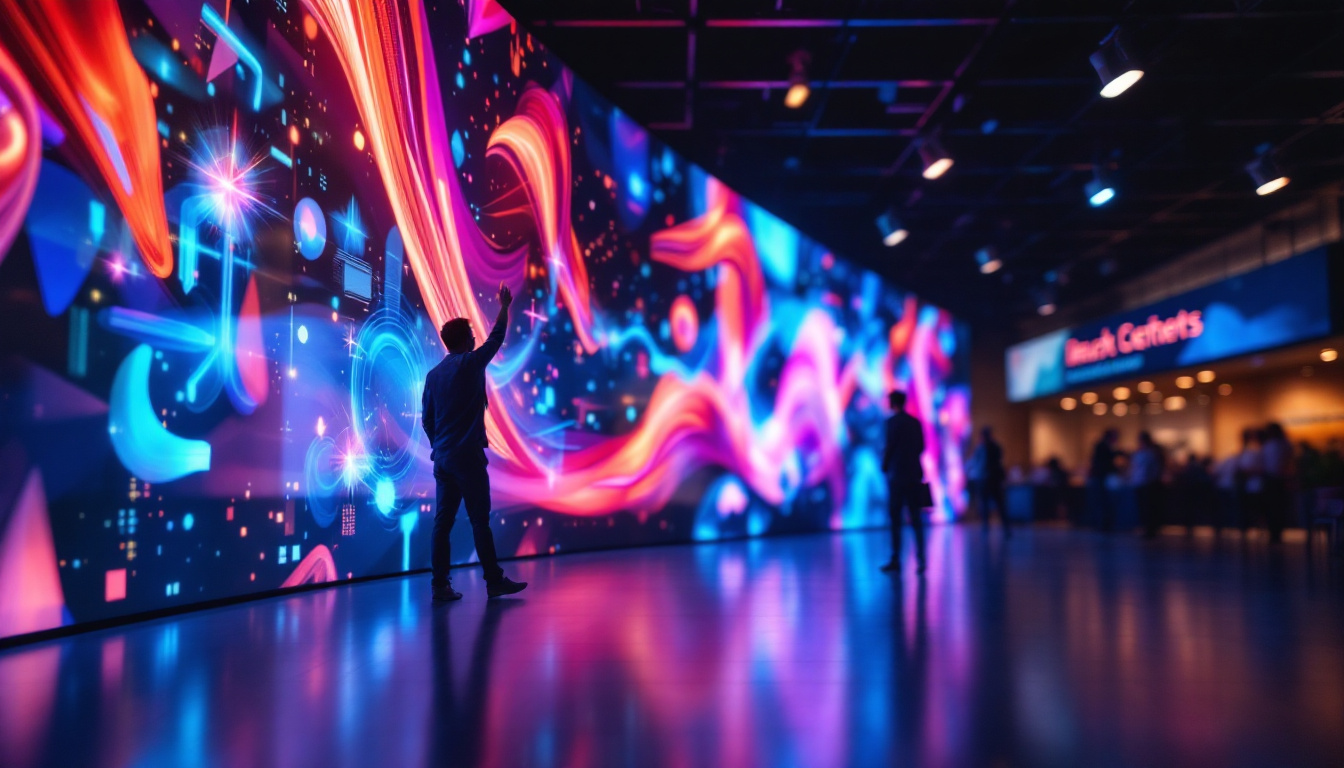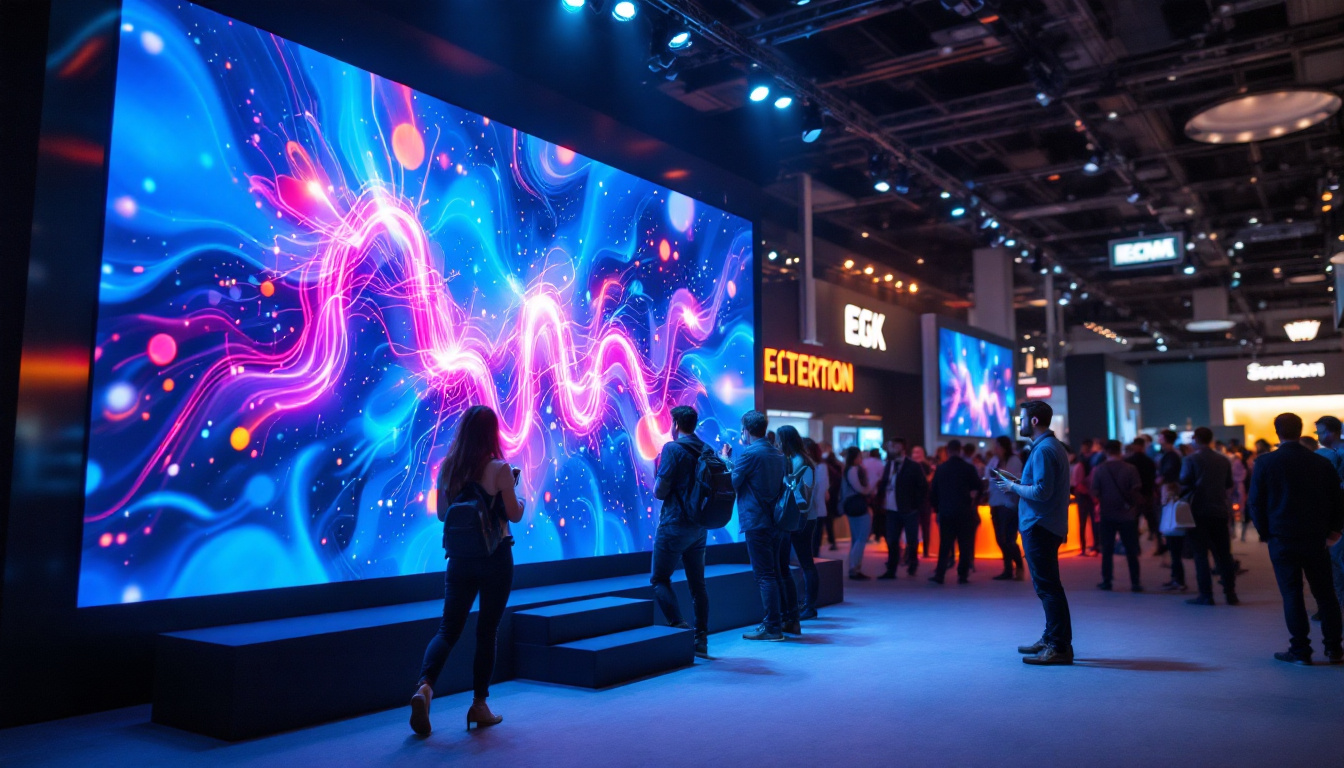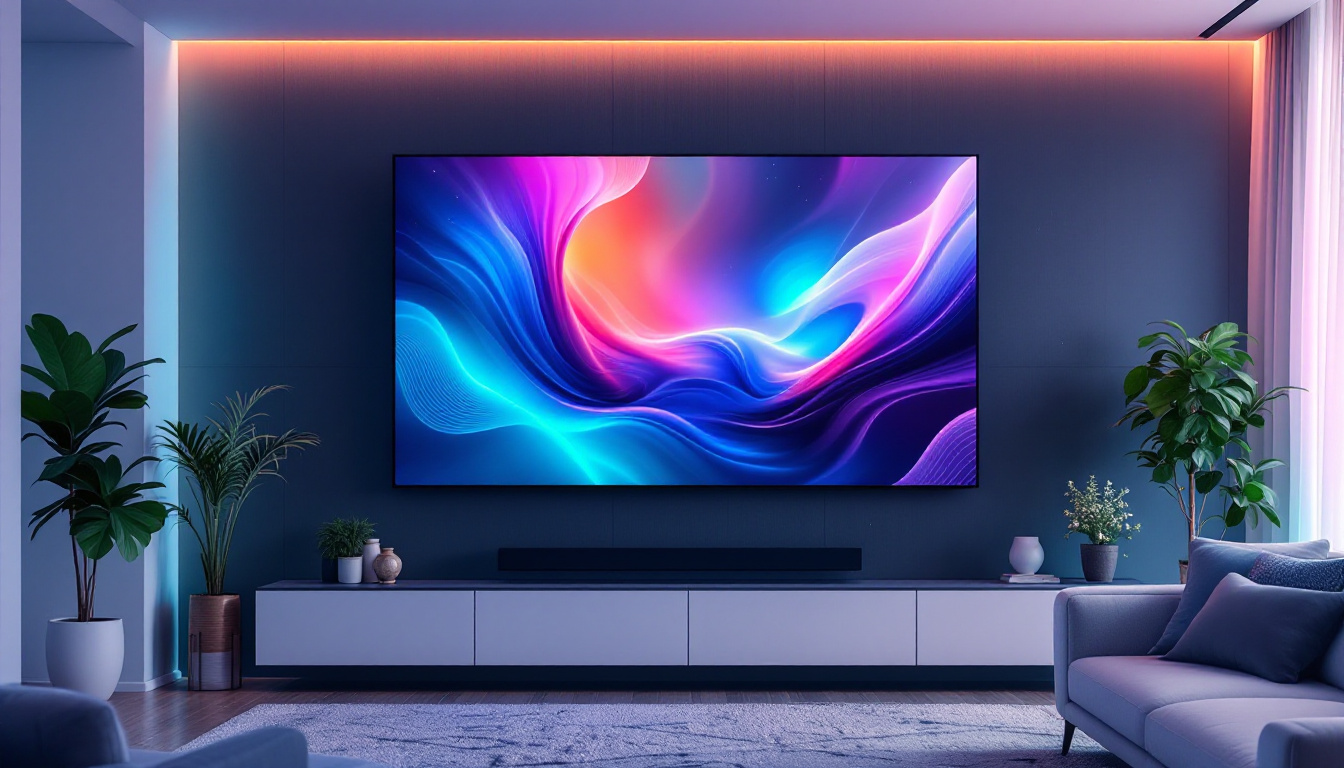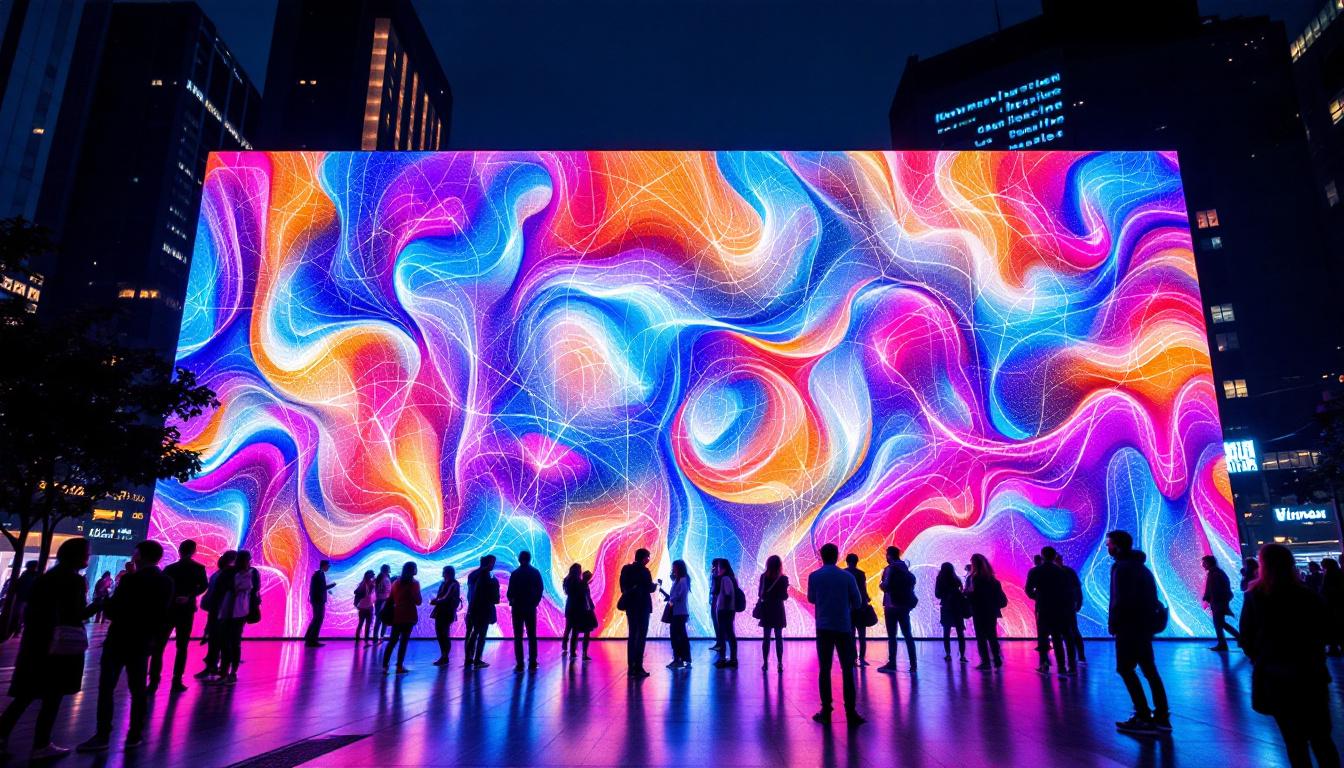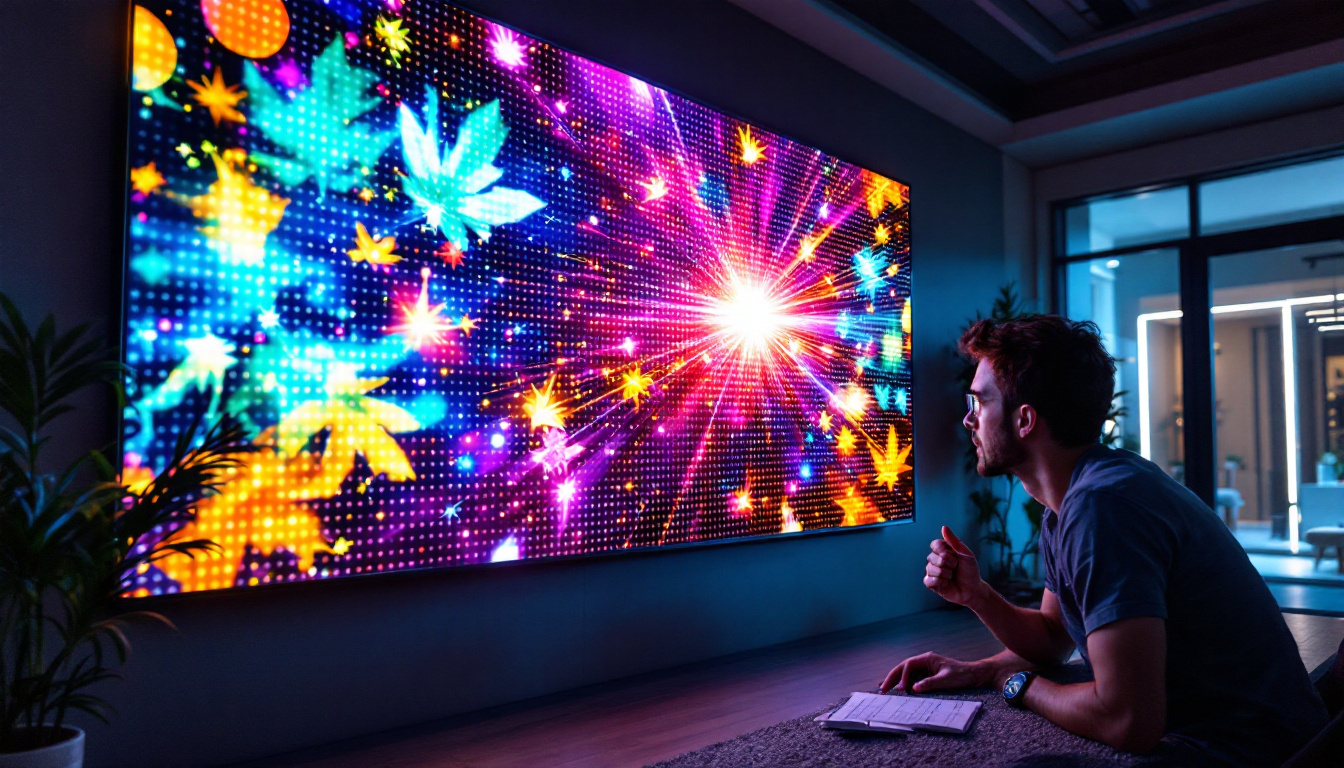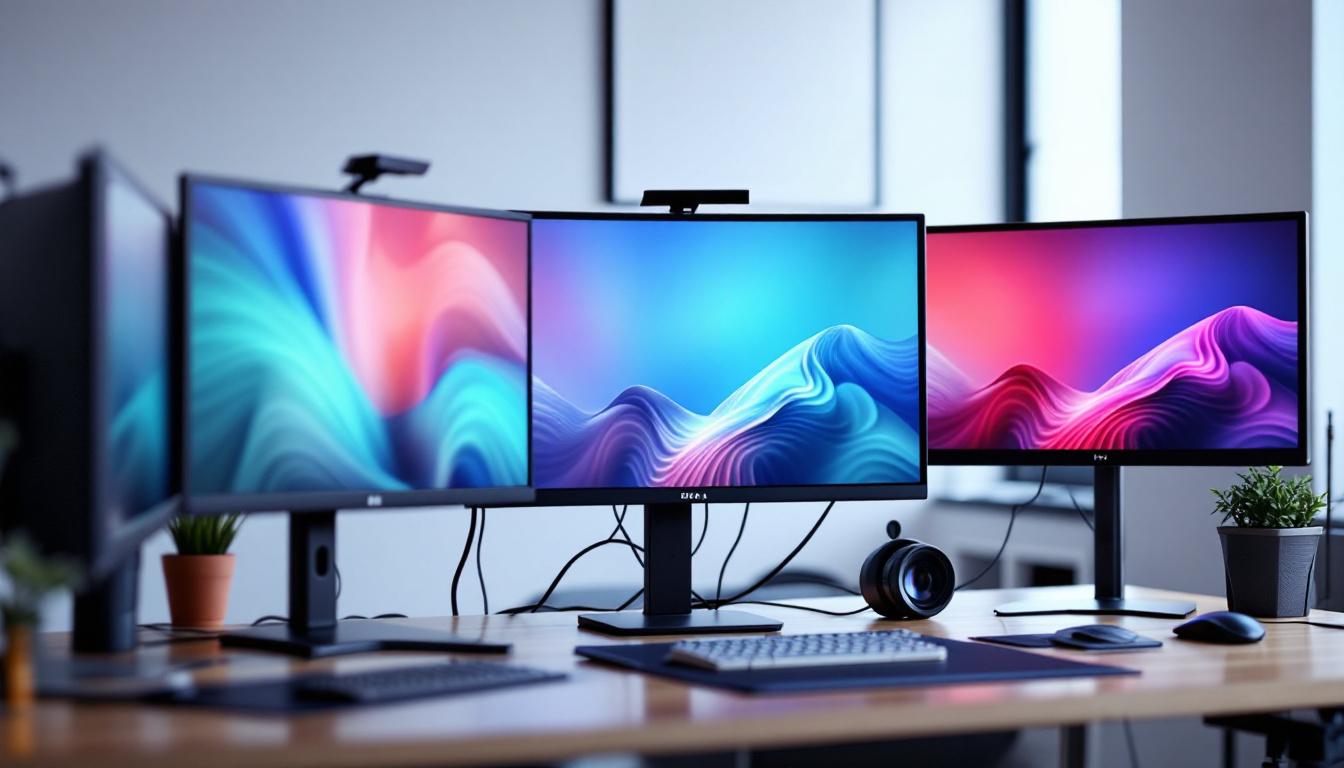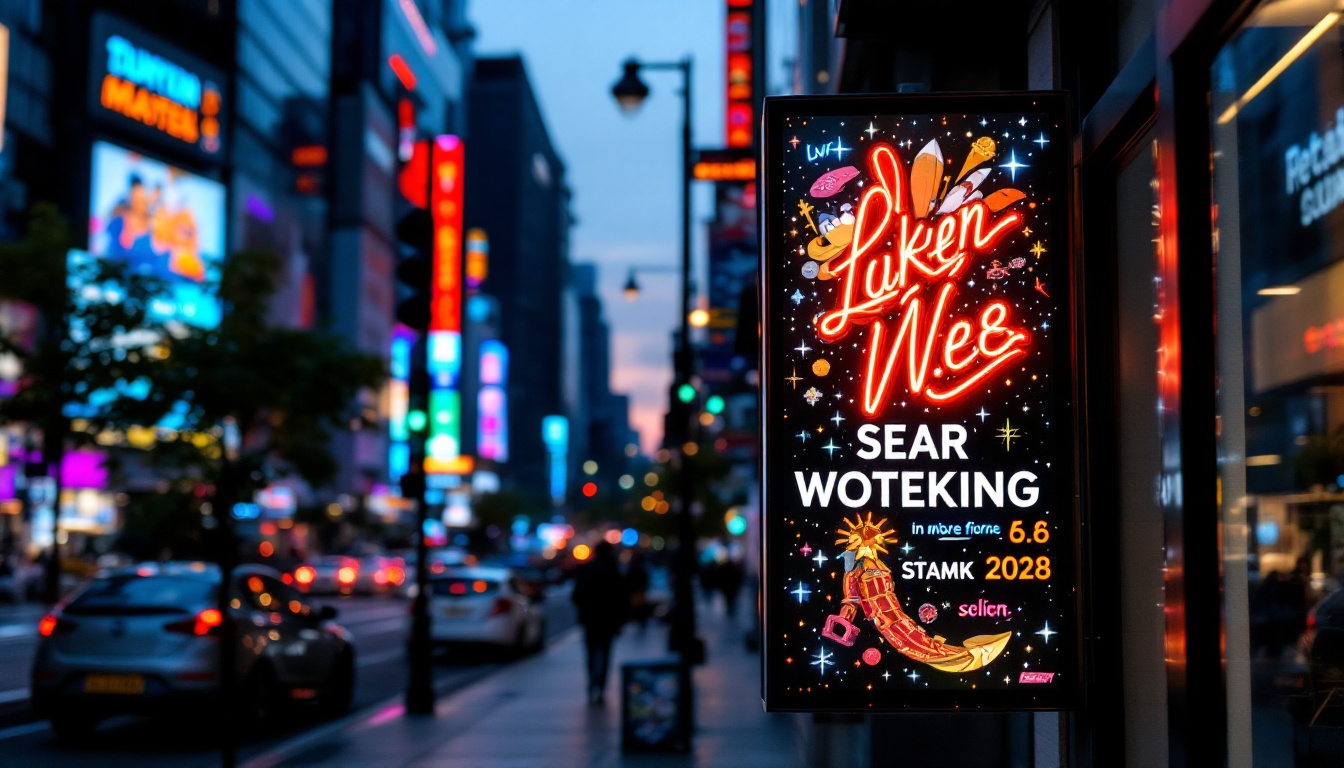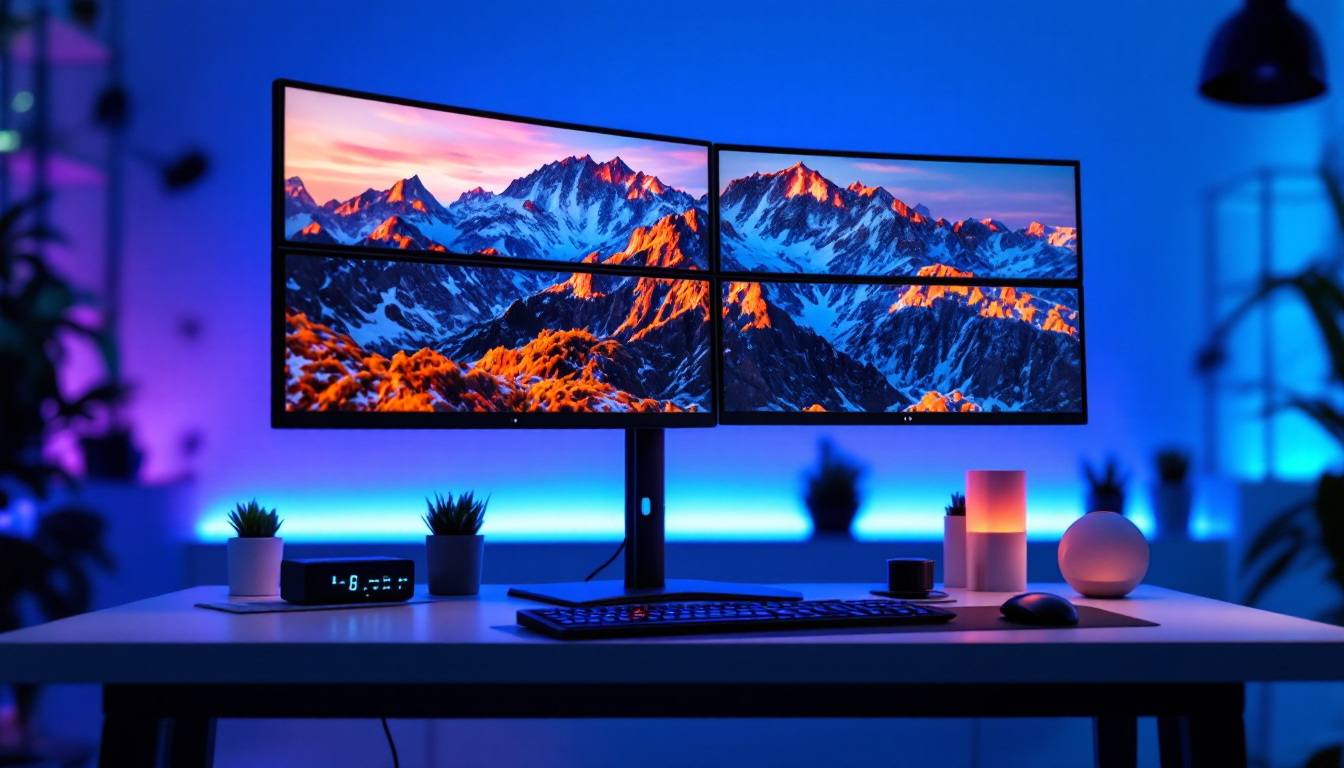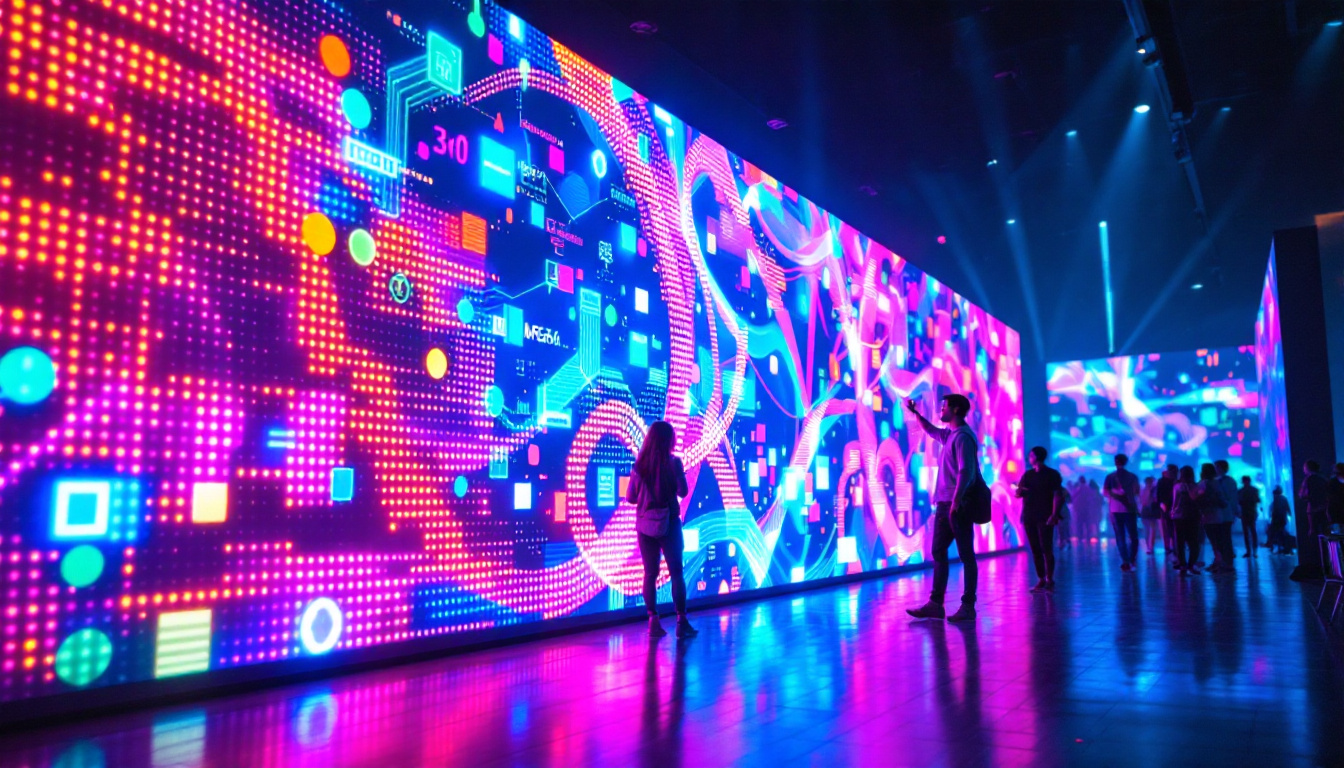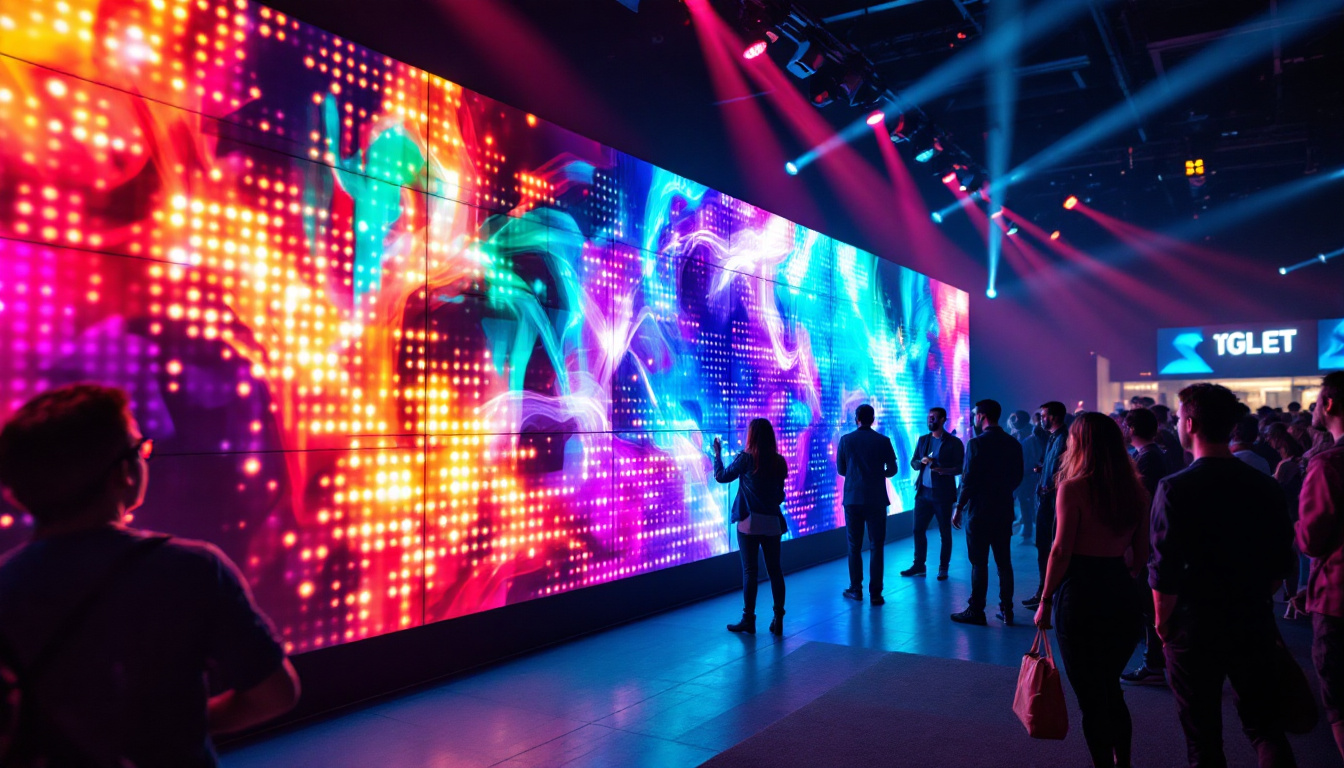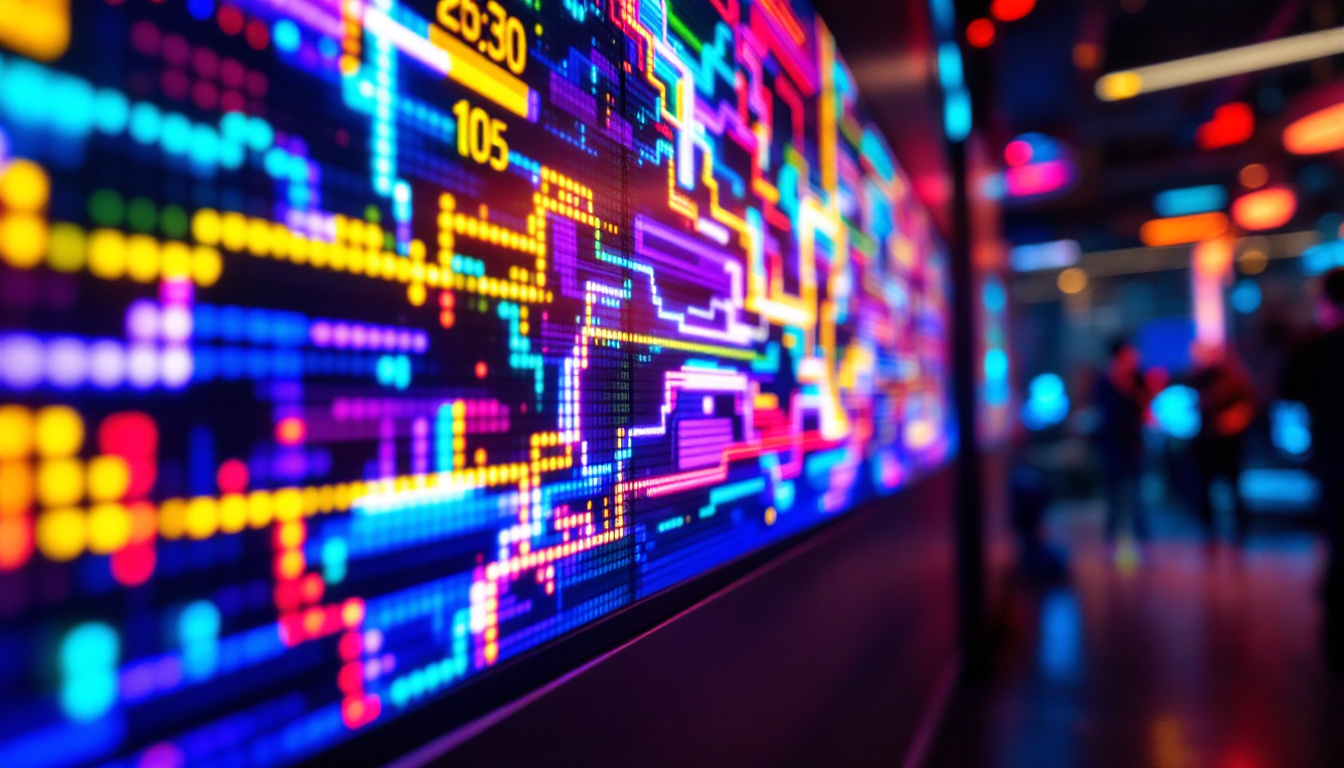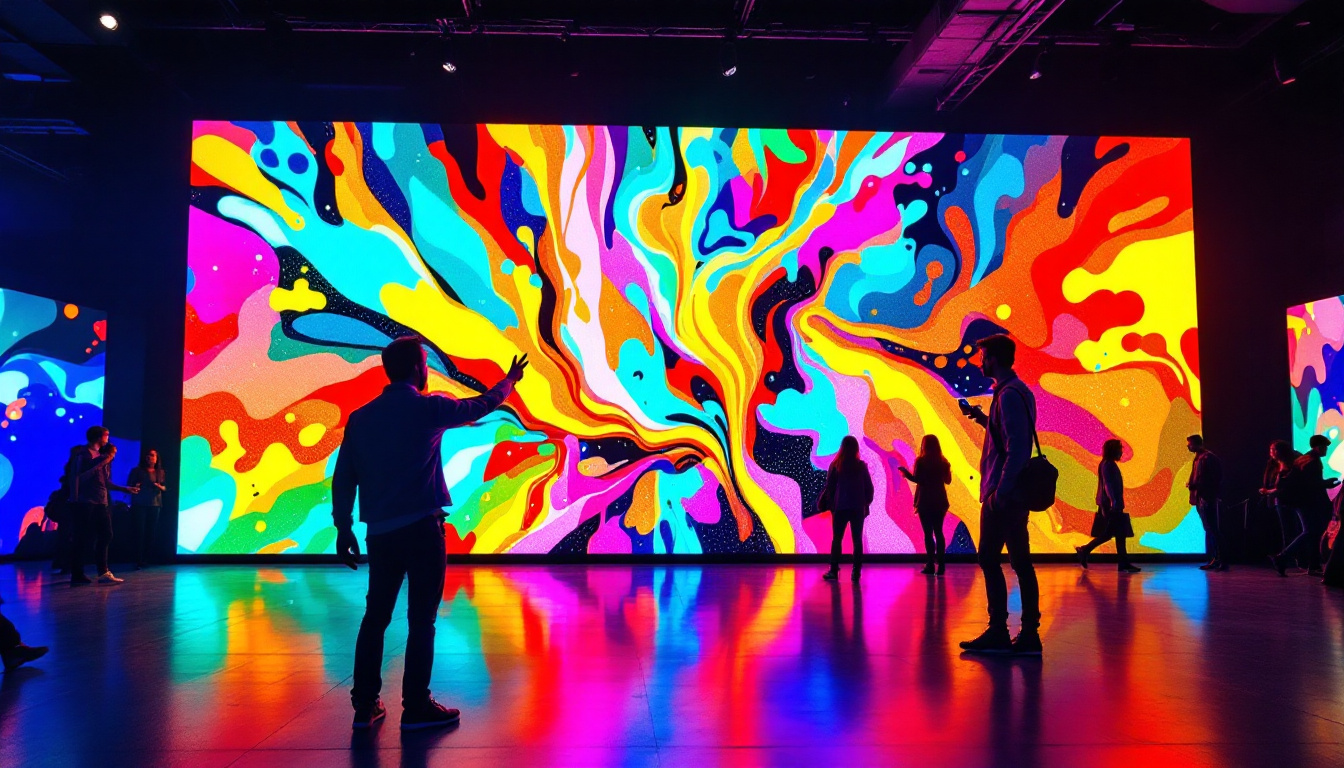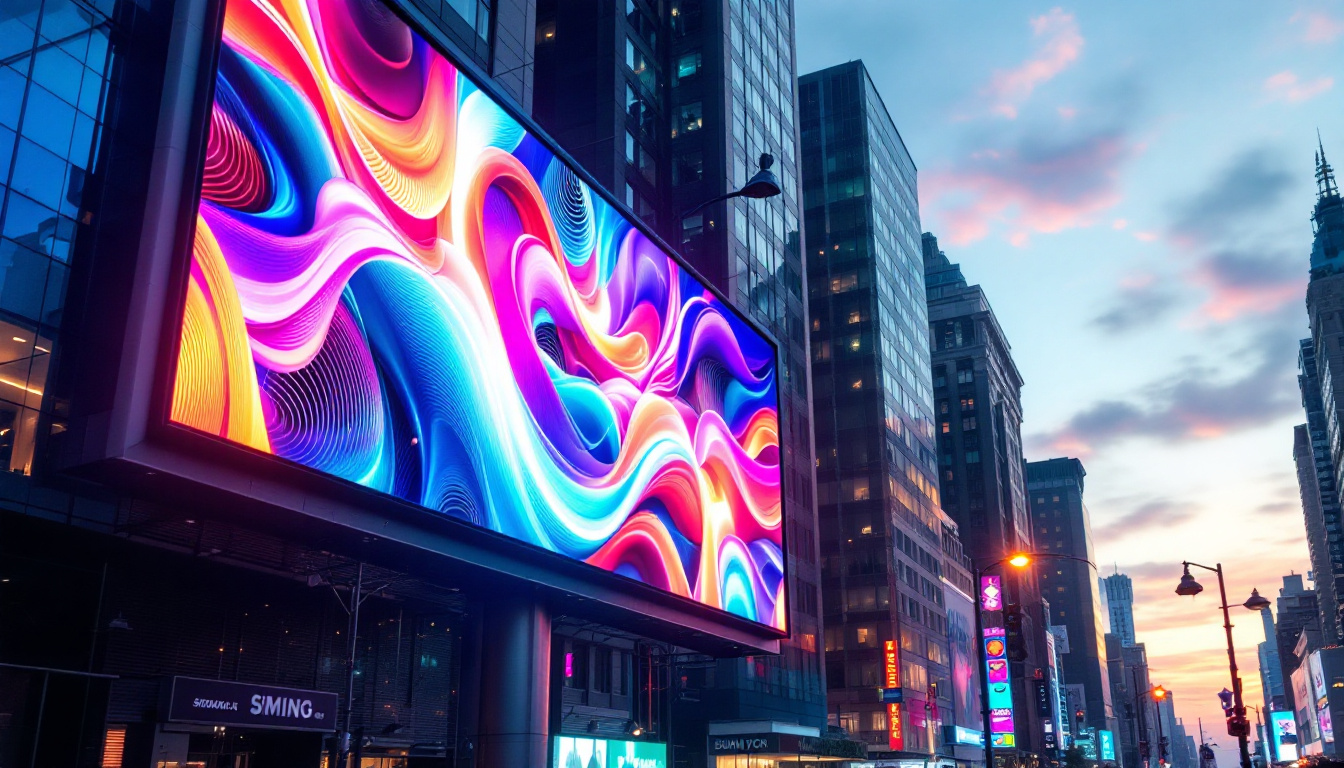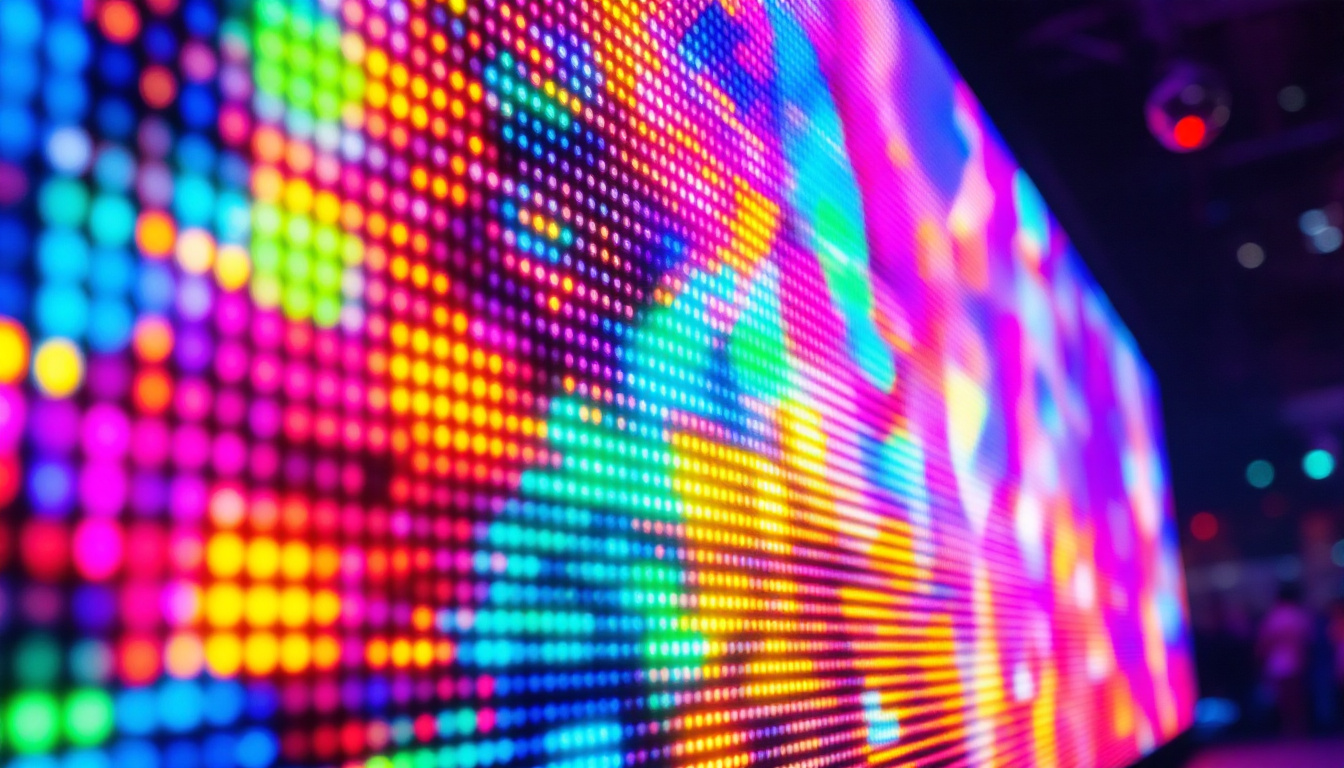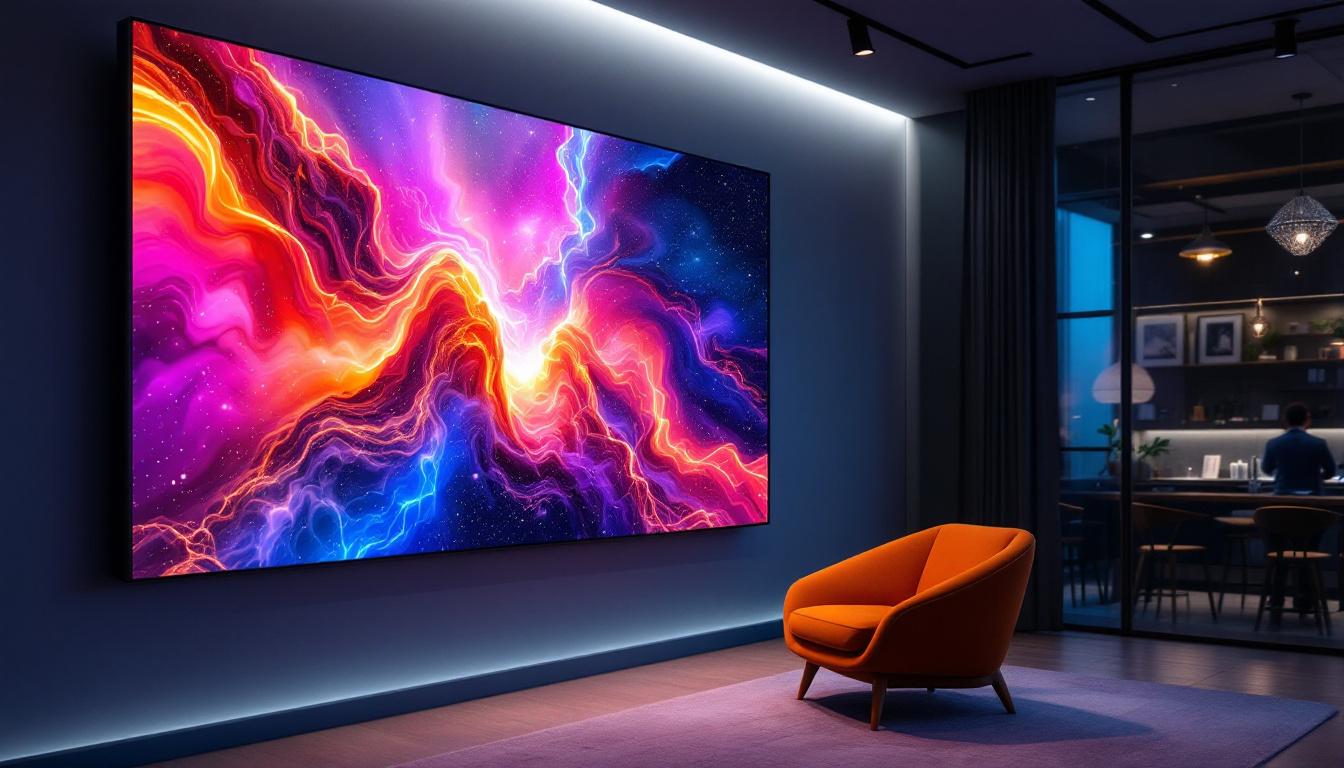In the rapidly evolving world of technology, LED displays have emerged as a cornerstone of modern visual communication. Their versatility and efficiency have made them a popular choice across various industries, from advertising to entertainment and beyond. This article delves into the concept of multisource manufacturing and how it plays a pivotal role in the production of LED displays.
Understanding LED Displays
LED displays are composed of numerous tiny light-emitting diodes (LEDs) that work together to create vibrant images and videos. These displays can be found in everything from large outdoor billboards to small screens on electronic devices. The technology behind LED displays has advanced significantly, leading to improved performance, energy efficiency, and cost-effectiveness. As a result, they have become a staple in modern visual communication, transforming how information is conveyed in public spaces and personal devices alike.
Moreover, the versatility of LED displays has opened up new avenues for creativity and innovation in advertising, entertainment, and information dissemination. With the ability to create dynamic content that can be easily updated, businesses can engage audiences in real-time, tailoring messages to specific demographics or events. This adaptability not only enhances user experience but also maximizes the impact of marketing campaigns, making LED displays an essential tool in today’s fast-paced digital landscape.
Types of LED Displays
LED displays come in various types, each designed for specific applications. The most common types include:
- Direct View LED: These displays are made up of individual LEDs that emit light directly. They are often used in large-scale outdoor advertising and sports arenas, where their bright and vivid colors can capture the attention of large crowds. The modular nature of direct view LED displays also allows for flexible sizing and configurations, enabling businesses to create custom shapes and designs that stand out.
- LED-backlit LCD: In these displays, LEDs are used to illuminate an LCD panel. This technology is prevalent in televisions and computer monitors, offering better contrast and color accuracy. The backlighting provided by LEDs allows for thinner screens and improved energy efficiency, making them a popular choice for consumers seeking high-quality visuals without sacrificing space.
- Organic LED (OLED): OLED displays utilize organic compounds that emit light when electricity is applied. They are known for their vibrant colors and deep blacks, making them popular in high-end televisions and smartphones. The flexibility of OLED technology also allows for curved and even foldable screens, pushing the boundaries of design and functionality in consumer electronics.
Key Advantages of LED Displays
The popularity of LED displays can be attributed to several key advantages:
- Energy Efficiency: LED technology consumes significantly less power compared to traditional display technologies, making it an environmentally friendly option. This energy efficiency not only reduces operational costs for businesses but also contributes to lower carbon footprints, aligning with global sustainability goals.
- Longevity: LED displays typically have a longer lifespan than other types of displays, reducing the need for frequent replacements. This durability makes them a cost-effective investment in the long run, as businesses can rely on their performance for years without the worry of degradation in quality.
- Brightness and Clarity: LED displays offer superior brightness and clarity, making them ideal for outdoor use where visibility is crucial. Their ability to maintain image quality in direct sunlight ensures that messages remain clear and engaging, even in challenging lighting conditions.
In addition to these advantages, LED displays are also known for their rapid response times and high refresh rates, which are essential for displaying fast-moving content such as sports or video games. This capability allows for smooth transitions and reduces motion blur, enhancing the viewing experience for audiences. Furthermore, advancements in LED technology have led to the development of features like HDR (High Dynamic Range), which provides a wider color gamut and improved contrast, further elevating the quality of visual displays.
Multisource Manufacturing: A New Paradigm
Multisource manufacturing refers to the practice of sourcing components from multiple suppliers to enhance production efficiency and reduce risks. In the context of LED displays, this approach can lead to improved quality, cost savings, and greater innovation. By tapping into a diverse pool of suppliers, manufacturers can not only meet the demands of the market but also foster a competitive edge that is crucial in the rapidly evolving tech landscape.
The Importance of Sourcing
In the LED display industry, sourcing components from various suppliers is essential for several reasons:
- Quality Control: By diversifying suppliers, manufacturers can ensure that they are using high-quality components, which ultimately leads to better end products. This is particularly important in the LED display sector, where visual fidelity and longevity are paramount to customer satisfaction.
- Cost Management: Different suppliers may offer varying prices for similar components. By leveraging multiple sources, manufacturers can negotiate better deals and reduce overall production costs. This financial flexibility allows companies to allocate resources to other critical areas, such as research and development.
- Supply Chain Resilience: Relying on a single supplier can be risky. Multisource manufacturing mitigates this risk by ensuring that if one supplier faces issues, others can fill the gap. This resilience is especially vital in a global market where disruptions can arise from geopolitical tensions, natural disasters, or pandemics.
Challenges of Multisource Manufacturing
While the benefits of multisource manufacturing are significant, there are also challenges that manufacturers must navigate:
- Coordination Complexity: Managing multiple suppliers requires effective communication and coordination, which can complicate the manufacturing process. Companies must invest in robust supply chain management systems to streamline operations and maintain transparency across all supplier interactions.
- Quality Variation: Different suppliers may produce components with varying quality levels, necessitating rigorous quality control measures. Manufacturers often need to implement standardized testing protocols to ensure that all components meet their specifications, which can add time and expense to the production cycle.
- Logistical Issues: Coordinating deliveries from multiple sources can lead to logistical challenges, impacting production timelines. Effective logistics management becomes crucial, as delays from one supplier can cascade through the entire supply chain, affecting the timely delivery of finished products to customers.
Moreover, the integration of technology in multisource manufacturing is transforming how companies approach supplier relationships. Advanced analytics and machine learning tools can help manufacturers predict supplier performance and identify potential risks before they impact production. Additionally, the rise of digital platforms for supplier collaboration allows for real-time updates and more agile responses to market changes. As the industry continues to evolve, those who can effectively harness these technological advancements will likely lead the charge in redefining manufacturing standards.
Furthermore, the environmental impact of sourcing practices is becoming an increasingly important consideration. Manufacturers are now more aware of the sustainability practices of their suppliers, opting for those who adhere to eco-friendly processes. This shift not only enhances a company’s brand reputation but also aligns with the growing consumer demand for sustainable products. By prioritizing suppliers who demonstrate a commitment to environmental stewardship, manufacturers can contribute to a more sustainable future while also appealing to a conscientious customer base.
The Role of Technology in Multisource Manufacturing
Advancements in technology have significantly enhanced the effectiveness of multisource manufacturing. From supply chain management software to data analytics, technology plays a crucial role in optimizing the manufacturing process.
Supply Chain Management Software
Modern supply chain management software allows manufacturers to track inventory, manage orders, and communicate with suppliers in real-time. This level of visibility is essential for effective multisource manufacturing, as it helps manufacturers respond quickly to changes in demand or supply disruptions.
Data Analytics
Data analytics can provide valuable insights into supplier performance, quality control, and production efficiency. By analyzing data from various sources, manufacturers can identify trends, optimize processes, and make informed decisions about sourcing strategies.
Case Studies in Multisource Manufacturing
Examining real-world examples can provide a clearer understanding of how multisource manufacturing operates in the LED display industry. Several companies have successfully implemented this strategy, yielding impressive results.
Company A: Revolutionizing Outdoor Advertising
Company A, a leader in outdoor advertising, adopted a multisource manufacturing strategy to enhance its LED display offerings. By sourcing components from multiple suppliers, they were able to reduce costs while maintaining high quality. This approach allowed them to quickly adapt to market demands, launching new products faster than competitors.
Company B: Enhancing Product Quality
Company B, known for its high-end LED televisions, faced challenges with component quality from a single supplier. By diversifying its sourcing strategy, the company improved overall product quality and customer satisfaction. The switch not only enhanced their reputation but also led to increased sales and market share.
Future Trends in LED Display Manufacturing
The LED display industry is poised for continued growth and innovation. As technology evolves, several trends are likely to shape the future of multisource manufacturing.
Increased Customization
As consumer demand for personalized experiences grows, manufacturers will need to adapt by offering customized LED display solutions. Multisource manufacturing will enable companies to source unique components that cater to specific customer needs, enhancing product differentiation.
Sustainability Initiatives
With a growing emphasis on sustainability, manufacturers will increasingly seek eco-friendly components and production methods. Multisource manufacturing allows companies to explore sustainable sourcing options, aligning with environmental goals while maintaining quality and performance.
Integration of Smart Technologies
The integration of smart technologies, such as IoT and AI, will revolutionize the LED display industry. These technologies can optimize manufacturing processes, improve supply chain management, and enhance product functionality. Multisource manufacturing will be crucial in sourcing the diverse components needed for these advanced systems.
Conclusion
Multisource manufacturing represents a transformative approach in the production of LED displays, offering significant advantages in quality, cost management, and supply chain resilience. As the industry continues to evolve, embracing this strategy will be essential for manufacturers seeking to stay competitive in a dynamic market.
By understanding the complexities and benefits of multisource manufacturing, companies can better navigate the challenges of the LED display industry. As technology advances and consumer demands shift, the ability to source components from multiple suppliers will be a key driver of innovation and success.
Discover Cutting-Edge LED Displays with LumenMatrix
As you consider the future of visual communication and the role multisource manufacturing plays in the LED display industry, we invite you to explore LumenMatrix’s innovative solutions. Our commitment to excellence ensures that every LED display module we offer, from Indoor and Outdoor LED Wall Displays to specialized solutions like Vehicle LED Displays and Custom LED Displays, is designed to captivate and engage your audience. Experience the transformative power of our LED display technology and take the first step towards revolutionizing your visual messaging. Check out LumenMatrix LED Display Solutions today and see how we can enhance your brand visibility with impact and clarity.

